目次
- 1 Nippon Steel Completes $14.1B US Steel Acquisition
- 1.1 A Long Journey Through Political Headwinds
- 1.2 National Security Agreement and the “Golden Share”: Unprecedented Compromise
- 1.3 Nippon Steel’s Strategic Vision: Path to “World No.1 Comprehensive Steelmaker”
- 1.4 Nippon Steel’s Technology and Business Scope: Comprehensive Strength Leading the World
- 1.5 $36 Billion Investment Plan: US Steel’s Regeneration and Development
- 1.6 Technological Innovation and Sustainability: Challenge Toward 2050 Carbon Neutrality
- 1.7 Financial Impact and Funding Strategy
- 1.8 US Steel’s Challenges and Path to Regeneration
- 1.9 Human Resources Strategy and Organizational Transformation: Cultivating “DNA for Continuous Growth”
- 1.10 Impact on the Global Steel Industry and Future Outlook
- 1.11 Conclusion: Dawn of a New Era for Japanese Manufacturing
- 1.12 References and Related Links
Nippon Steel Completes $14.1B US Steel Acquisition
On June 18, 2025, a historic moment arrived for the global steel industry. Nippon Steel Corporation officially completed its acquisition of US Steel, making the American steel giant a wholly-owned subsidiary. This $14.1 billion deal, finalized after 18 months of negotiations and with President Trump’s approval, represents one of the largest Japanese acquisitions of an American company in history.
With this acquisition, Nippon Steel’s global crude steel production capacity reaches 86 million tons per year, positioning it as the world’s second-largest steelmaker after China’s Baowu Steel Group. This marks a significant step toward reclaiming the global leadership position Nippon Steel held from 1970 to 2000.
A Long Journey Through Political Headwinds
This acquisition transcended typical corporate transactions, becoming a complex political battleground. Since the deal’s announcement in December 2023, it faced fierce domestic opposition in the United States.
United Steelworkers’ Strong Opposition
Immediately after the announcement, the United Steelworkers (USW) union strongly opposed the deal, citing concerns about “employment impacts” and “national security.” The USW, representing American steel workers’ interests, is a powerful organization whose influence significantly affected political decisions.
The union’s concerns centered on potential job cuts and production facility relocations overseas after the Japanese acquisition. There was also deep-seated resistance to foreign control over America’s foundational steel industry.
President Biden’s Blocking Order
Responding to union opposition, former President Biden moved to issue an executive order blocking the acquisition, citing national security concerns. Nippon Steel challenged this decision, filing multiple lawsuits in federal court arguing that the order “distorted procedures for political purposes” and lacked legitimate grounds.
Nippon Steel and US Steel sought to invalidate President Biden’s order and the Committee on Foreign Investment in the United States (CFIUS) review, continuing their legal battle to assert the acquisition’s legitimacy.
Presidential Election Battleground
Notably, US Steel’s headquarters in Pennsylvania became a crucial factor, as the state was a key battleground in the presidential election. This geographic element elevated the acquisition to a political flashpoint.
As a presidential candidate, Trump claimed he would prevent Japanese companies from “taking over” important American companies, appealing to working-class voters. President Biden, avoiding criticism from Trump, emphasized the importance of maintaining “a strong American steel company run by American steelworkers” and showed caution toward the acquisition.
Vice President Harris, upon becoming a presidential candidate, also declared opposition to the acquisition, stating that “domestic control of steel production is paramount.” The acquisition thus became a major campaign issue regarding American industrial and employment policies.
Historical Anti-Japanese Sentiment
Opposition to the acquisition had deeper roots. Analysis suggests that America’s historical perception of Japan as “unfair” since the Pearl Harbor attack still influences public sentiment. Additionally, memories of Japanese companies’ extensive acquisitions of American real estate and entertainment companies in the late 1980s and early 1990s, termed an “invasion,” affected political judgment.
Some analysts suggest that if the acquisition had been proposed by British or Dutch companies, it might not have become such a significant political issue. The fact that it was a Japanese company triggered particular wariness.
President Trump’s “Historic Decision”
However, the situation changed dramatically when Trump assumed the presidency in January 2025. President Trump shifted to welcoming increased investment in America and directed CFIUS to re-examine the deal. Finally, on June 13, 2025, he signed an executive order approving the acquisition.
Nippon Steel Chairman and CEO Eiji Hashimoto praised this as a “historic decision” and expressed deep gratitude to President Trump. Hashimoto stated, “This acquisition benefits both Japan and America and could represent a new era of development for Japanese manufacturing.”
As a condition for approval, Nippon Steel and US Steel signed a National Security Agreement (NSA) with the US government. This agreement includes strict conditions to protect American steel industry independence and employment.
The most symbolic element of the NSA is the US government’s “golden share.” While carrying no voting rights, this golden share holds powerful veto authority over US Steel’s major management decisions.
Matters requiring US government consent include:
- Changes to US Steel’s headquarters location (Pittsburgh, Pennsylvania)
- Changes to US Steel’s company name
- Transfer of production or employment outside the United States
- Reduction of capital investments promised in the NSA
- Significant acquisitions of competing businesses within the United States
- Closure or suspension of existing manufacturing facilities
- Certain matters related to trade and labor
Interestingly, Nippon Steel proposed this golden share arrangement. Chairman Hashimoto emphasized that since the golden share’s scope is limited to certain key matters, “management freedom and profitability are secured, and this agreement is fully satisfactory for our company.”
Americanization of Management Structure
The NSA also established strict requirements for US Steel’s management structure:
- A majority of the board of directors must be US citizens
- At least three independent directors must be US citizens
- Core management positions, including the CEO, must be held by US citizens
However, Nippon Steel Vice Chairman Hiroki Mori will serve as US Steel’s chairman, and approximately 40 technical staff will be dispatched to facilitate local exchange. This balance allows Nippon Steel to leverage its technical expertise while maintaining American management autonomy.
Non-interference in Trade Issues
Nippon Steel and its US subsidiary, Nippon Steel North America, Inc. (NSNA), have committed not to interfere with US Steel’s trade-related decisions or requests for trade measures under US law against unfair trade practices. This guarantees the independence of American trade policy.
Industrial Policy Aspects
Chairman Hashimoto views the NSA content as “more industrial and employment policy than security policy.” The US government expects Nippon Steel to fully contribute its technology to regenerate and develop US Steel, which aligns with “American manufacturing revival” and “US regeneration.”
Indeed, multiple Japanese government officials view this positively, noting that “achieving 100% subsidiary status and the unlikely activation of the golden share means Nippon Steel gained more than it conceded.” Similar arrangements exist in overseas operations in India and elsewhere, ensuring management freedom.
Nippon Steel’s Strategic Vision: Path to “World No.1 Comprehensive Steelmaker”
For Nippon Steel, the US Steel acquisition is not merely about expansion but a strategic move to realize its grand vision of becoming the “world’s No.1 comprehensive steelmaker.”
Returning to Lost Global Leadership
Nippon Steel, as the former Nippon Steel Corporation, was the world’s largest steelmaker by crude steel production from 1970 to 2000. However, with the rise of emerging economies, particularly China, it had fallen to fourth place globally by 2023. This acquisition is positioned as a “necessary strategy” to reclaim the top position.
The acquisition brings Nippon Steel’s global crude steel production capacity to 86 million tons per year, making it the world’s second-largest steelmaker after China’s Baowu Steel Group. This represents significant progress toward the company’s strategic goal of “100 million tons of global crude steel production capacity.”
Strategic Importance of the US Market
The US market holds special significance for Nippon Steel. It’s the only developed country with long-term population growth expectations and anticipated high domestic steel demand. Particularly, it’s the largest market for high-grade steel products like automotive steel, where Nippon Steel excels, and tariff protection provides a stable market environment.
By establishing production facilities within the US, Nippon Steel can avoid protectionist policies like the Trump administration’s proposed “50% steel tariffs.” The company will significantly expand its production and sales channels in the US market, enhancing competitiveness in automotive and construction sectors.
Stabilizing Resource Procurement
US Steel’s iron ore mines in Minnesota are valuable assets for Nippon Steel. With US Steel’s 100% iron ore self-sufficiency rate, these mines will contribute to stabilizing raw material procurement and enhancing cost competitiveness. Reducing raw material price volatility risk ensures long-term competitive advantages.
Nippon Steel aims to evolve its raw materials business from “procurement” to “business operations,” seeking stable procurement and mitigation of market fluctuation impacts. US Steel’s mining assets are crucial elements of this strategy.
Nippon Steel’s Technology and Business Scope: Comprehensive Strength Leading the World
The Nippon Steel Group operates across diverse business areas centered on steelmaking. Its technological capabilities and business breadth will generate integration synergies after the US Steel acquisition.
Diversified Business Portfolio
The Nippon Steel Group’s business areas span widely:
- Engineering business
- Chemicals and new materials business
- System solutions business
- Mining
- Logistics and transportation
- Trading
- Construction and equipment
- Environment and energy
- Real estate
- Culture and sports
This diversified business development captures various business opportunities derived from steelmaking, creating group-wide synergy effects.
Comprehensive Product Lineup
Nippon Steel’s products support all aspects of modern society:
- Heavy plates: Used in ships and large structures
- Sheets and surface-treated steel sheets: Including high-tensile steel for automobiles, electrical products, cans, and transformers
- Construction materials: Used in architecture and civil engineering
- Bars and wire rods: Used in automotive parts and buildings
- Steel pipes: Used in energy sectors and machine parts
- Railway wheels and axles: Holding Japan’s No.1 domestic market share
- Forged crankshafts: Key products for automobiles
- Titanium and stainless steel: High-value products for special applications
World-Leading Technological Development
Under the corporate philosophy of “pursuing the world’s best technology and manufacturing capabilities,” Nippon Steel possesses world-class R&D resources. Key technological strengths include:
- High-strength steel sheet technology: Contributing to automotive weight reduction and safety improvement
- Eco-process technology: Steelmaking processes that reduce environmental impact
- High corrosion-resistant coated steel sheets (ZEXEED®): Superior corrosion-resistant surface treatment technology
- GO/NO electrical steel sheets: High-efficiency materials for transformers and motors
- High-alloy seamless steel pipes: Special steel pipes for harsh environments
Digital Transformation (DX) Pioneer
Nippon Steel has actively incorporated ICT since the 1960s, possessing rich data assets and business systems. The company is reforming production and business processes based on data, strengthening its “connecting power” and “controlling power.”
DX applications include:
- Anomaly detection systems using AI and machine learning
- Blast furnace operation optimization algorithms
- Future prediction through simulation
- Production process automation and efficiency improvement
Importance of Intellectual Property Strategy
Nippon Steel positions intellectual property as the source of corporate activities, expanding patent assets in both quality and quantity with Patent Asset Index values exceeding competitors. This intellectual property accumulation will play a crucial role in technology transfer to US Steel.
$36 Billion Investment Plan: US Steel’s Regeneration and Development
In addition to the $14.1 billion acquisition price, Nippon Steel announced plans to invest approximately $11 billion in US Steel’s manufacturing facilities through 2028. This represents a significant increase from the initial planned investment of $2.7 billion.
Investment Plan Details
The $11 billion investment will be allocated to:
- Mon Valley Works investment: Introduction of state-of-the-art equipment and production capacity expansion
- Gary Works investment: Efficiency improvements and environmental compliance enhancement
- Next-generation hot rolling line construction: Fundamental strengthening of high-grade sheet production
- High-value product production enhancement: High corrosion-resistant coated sheets, high-efficiency electrical steel sheets, etc.
- Decarbonization technology introduction: Implementation of CO₂ reduction technology
- Digitalization investment: Production process optimization and DX promotion
- Greenfield projects: Initial investment in new construction projects
Chairman Hashimoto explains this investment as “originally necessary to increase corporate value and extremely rational and efficient.” This NSA-defined investment plan will contribute to US Steel’s competitiveness enhancement, low-emission steel response, and global market positioning.
Strong Commitment to Employment
The investment plan includes maintaining and creating over 100,000 jobs. Nippon Steel clearly commits to:
- No layoffs related to the acquisition
- No plant closures or suspensions
- No overseas transfer of production or employment
Furthermore, Nippon Steel decided to pay closing bonuses to non-union employees below senior manager level at acquisition completion. Similar bonus payments were proposed to all union members, with willingness to discuss any questions.
Vice Chairman Mori stated, “All US Steel employees are US Steel’s most valuable assets for growth,” demonstrating long-term commitment.
Technological Innovation and Sustainability: Challenge Toward 2050 Carbon Neutrality
Nippon Steel has established its “Carbon Neutral Vision 2050,” positioning climate change response as a core management priority. The US Steel acquisition is also an important step toward achieving this ambitious goal.
Development of Innovative Steelmaking Processes
Aiming for carbon-neutral society realization by 2050, Nippon Steel is focusing development on two technological options:
- Blast furnace decarbonization: Using hydrogen as a reducing agent instead of traditional coke through blast furnace hydrogen reduction technology
- Electric furnace melting of pre-reduced iron: New process melting direct reduced iron (DRI) in electric furnaces
Blast furnace hydrogen reduction technology is particularly innovative, with Nippon Steel leading global development. The company is also considering early implementation of electric furnaces to reliably achieve 2030 CO₂ reduction targets.
Utilizing US Steel’s Electric Furnace Assets
US Steel’s advanced electric arc furnace minimill, Big River Steel, is a valuable asset for strengthening decarbonization efforts. Electric furnaces emit less CO₂ than blast furnaces and contribute to a circular economy by using scrap steel as raw material.
Nippon Steel plans to introduce advanced technologies including blast furnace CO₂ reduction technology to US Steel, promoting efforts toward 2050 carbon neutrality through technological fusion between the companies.
Converting Environmental Value to Economic Value
Decarbonized steelmaking involves three major cost increases:
- Increased R&D expenses
- Expanded capital investment
- Rising operating costs
For steel products subject to international competition, converting CO₂ reduction “environmental value” into product “economic value” (sales price) is a major challenge. Nippon Steel is advancing initiatives to form green steel markets:
- Promoting international standardization of green steel
- Creating purchasing incentives and support mechanisms
- Strengthening cooperation with governments, industry associations, standardization organizations, and academics
Strengthening Environmental Management
Nippon Steel implements comprehensive measures against environmental risks at steel plants:
- Water pollution control: Automatic wastewater monitoring devices, emergency water storage tanks, thorough inspection and maintenance
- Natural disaster countermeasures: Structural measures against earthquakes, tsunamis, and heavy rain; levee installation; evacuation facility development
- Waste management: Achieving 99% recycling rate, contributing to circular society construction
- Organizational structure: Systematic promotion through Environmental Policy Planning Committee and Green Transformation Promotion Committee
Financial Impact and Funding Strategy
This $36 billion acquisition and investment will significantly impact Nippon Steel’s finances. However, the company plans to maintain financial health through careful financial strategy.
Funding Methods
Acquisition funding will primarily come from bridge loans from major banks. This will change the debt-to-equity (D/E) ratio as follows:
- Pre-acquisition: 0.5
- Immediately post-acquisition: Approximately 0.8-0.9
- FY2024 target: 0.7 range
The company aims for early recovery of financial health through optimal funding methods.
Regarding Equity Financing Possibilities
While markets have speculated about potential equity financing to cover the massive acquisition and investment costs, Vice Chairman Mori stated clearly, “We are not considering equity financing that would cause dilution.” This demonstrates the policy to minimize impact on existing shareholders.
However, Jefferies has downgraded Nippon Steel’s investment rating, viewing the US Steel acquisition as a burden on stock price due to concerns about:
- Earnings forecast downgrade risk
- Possibility of equity financing
- Funding for additional investment
- Post-merger integration (PMI) issues
US Steel’s Challenges and Path to Regeneration
While US Steel is an iconic American steel company, it has faced challenging business conditions in recent years. Nippon Steel plans to overcome these challenges and regenerate US Steel.
Long-term Performance Decline
Despite its large scale, US Steel recorded losses in seven of the past ten years, suffering from long-term performance decline. Main factors include:
- High-cost structure
- Aging facilities
- Declining competitiveness
- Conflicts with powerful labor unions
Careful evaluation is needed regarding whether US Steel’s production efficiency improvements with declining employee numbers should be taken at face value, as asset efficiency deterioration relates to rapid total asset increases, requiring comprehensive assessment including sales and gross margin.
Nippon Steel’s Regeneration Strategy
Chairman Hashimoto expresses confidence: “Regenerating US Steel is a necessary strategy for Nippon Steel to return as the world’s top steelmaker, and it’s the only breakthrough for US Steel’s regeneration.” The regeneration strategy pillars include:
- Technology transfer: Full introduction of Nippon Steel’s advanced technologies
- Facility upgrades: Updating to state-of-the-art equipment with $11 billion investment
- Production efficiency: Optimizing production processes using DX
- Product sophistication: Shifting to high-value products
- Labor relations improvement: Building trust through constructive dialogue
Human Resources Strategy and Organizational Transformation: Cultivating “DNA for Continuous Growth”
Under the management philosophy of “developing and utilizing people to build a vibrant group,” Nippon Steel views the US Steel acquisition as an opportunity for organization-wide transformation.
Personnel Dispatch and Local Exchange
To facilitate smooth post-acquisition integration, the following human resources strategies will be implemented:
- Vice Chairman Hiroki Mori assumes chairmanship of US Steel
- Approximately 40 technical staff dispatched locally
- Promoting local exchange and accelerating technology transfer
- Building mutual understanding and trust
Global Talent Development
Through this acquisition, Nippon Steel aims to cultivate “DNA for continuous growth” throughout the organization, promoting individual employee awareness reform and work globalization. Priority areas include:
- Management talent development: Cultivating talent capable of global management
- Global talent development: Expanding talent for overseas business
- DX talent development: Developing talent capable of utilizing digital technology
- Technical talent development: Talent to inherit and develop world-class technical capabilities
Including domestic business personnel arrangements, the company will leverage US Steel integration to revitalize the entire organization.
Impact on the Global Steel Industry and Future Outlook
Nippon Steel’s US Steel acquisition could significantly impact the global steel industry. This strategic move comes amid major environmental changes including US-China trade friction, rising protectionism, and decarbonization demands.
Model for Responding to Protectionism
Unless the Trump administration significantly revises tariff policies, there are indications that Japanese and global companies may increasingly avoid US business. However, Nippon Steel has adopted a strategy to capture the market by expanding US investment.
This represents a management strategy premised on increasing government involvement in economics and business, demonstrating the importance of public-private partnerships. Nippon Steel’s approach could become a reference model for other Japanese companies.
Completion of International Supply Network
The acquisition completion is seen as a step toward “international supply network completion.” Nippon Steel is building a system to reliably capture local demand growth through integrated manufacturing base expansion in “regions where demand growth is certain” and “fields where our technical and product capabilities can be utilized.”
Priority bases include:
- United States: Established as the most important base through this acquisition
- ASEAN: Expansion into the rapidly growing Southeast Asian market
- India: Early investment in a future mega-market
Catalyst for Industry Reorganization
This acquisition may accelerate global steel industry reorganization. As the global steel industry struggles with Chinese oversupply, combining economies of scale with technological capabilities has become key to survival.
Nippon Steel’s successful US Steel acquisition may encourage other steelmakers to pursue cross-border integration or partnerships. Particularly for companies unable to independently fund massive decarbonization investments required by stricter environmental regulations, integration becomes a viable option.
Conclusion: Dawn of a New Era for Japanese Manufacturing
Nippon Steel’s US Steel acquisition has historical significance beyond a mere corporate acquisition. This challenge, involving political compromise while attempting US Steel’s regeneration through technological prowess and massive investment, could become a model for future overseas expansion by Japanese companies.
As Chairman Hashimoto stated, this acquisition “benefits both Japan and America and could represent a new era of development for Japanese manufacturing.” How Nippon Steel, starting anew as the world’s second-largest steelmaker, will enhance global market competitiveness and achieve its ambitious 2050 carbon neutrality goal remains to be seen.
Its success or failure could determine not just Nippon Steel’s future but the entire Japanese manufacturing industry’s trajectory. Facing multifaceted challenges in politics, economics, technology, and environment, Nippon Steel’s challenge to become the “world’s No.1 comprehensive steelmaker” has truly entered a new chapter.
References: This article was created based on official announcements from Nippon Steel and US Steel, various news reports, and provided research materials.
References and Related Links
External Links
- Best Deal For American Steel – Acquisition Special Site
- US Steel Official Website
- Nippon Steel Official Website
- Nippon Steel Integrated Report
- Nikkei
- Japan External Trade Organization (JETRO)
- The Wall Street Journal
Related Articles
*This article was created based on official announcements from Nippon Steel and US Steel, various news reports, and provided research materials.
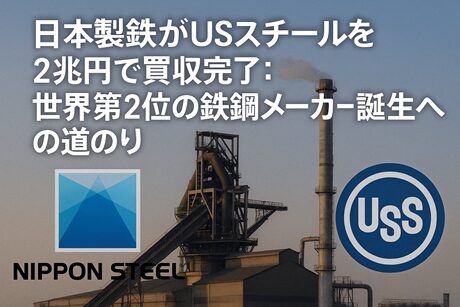
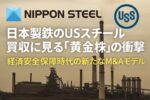
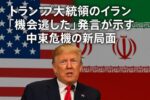
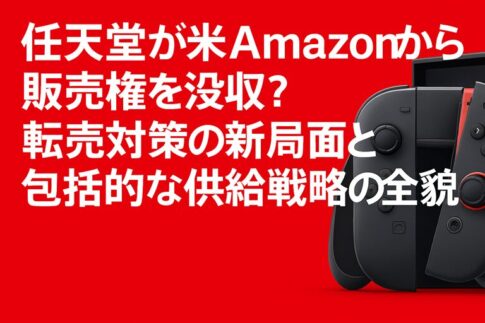
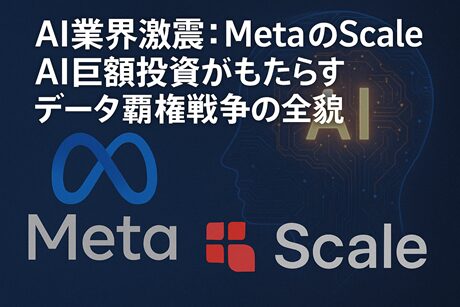

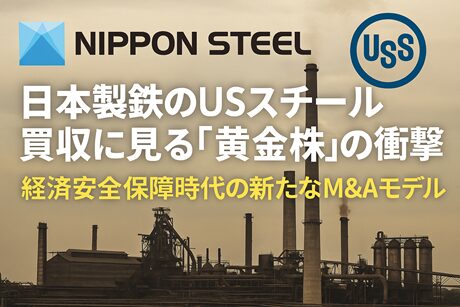
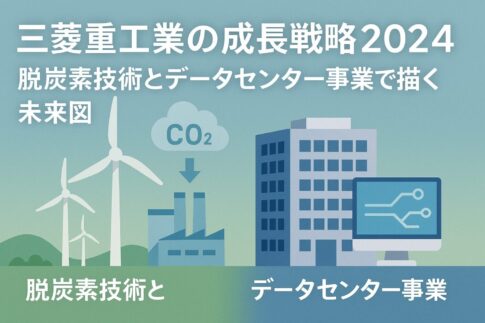
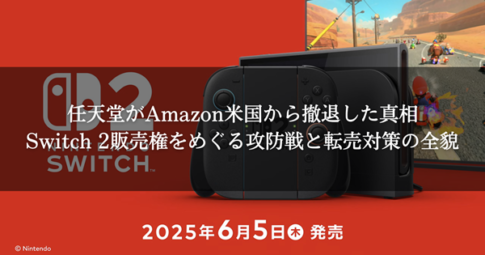
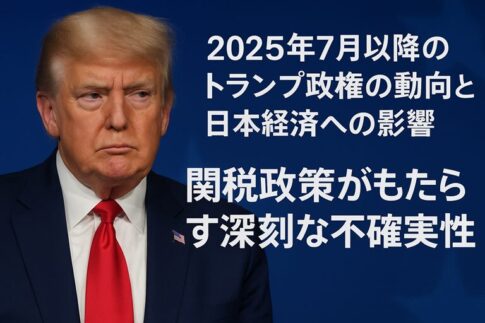
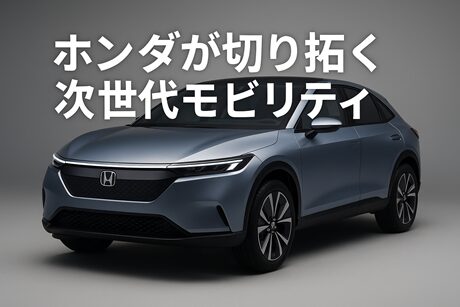

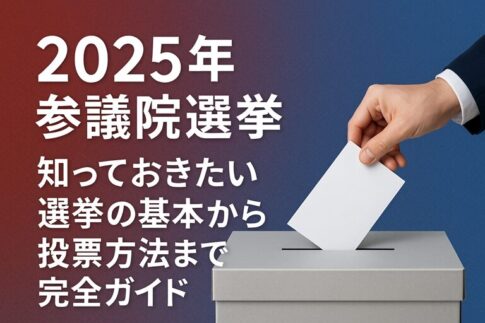
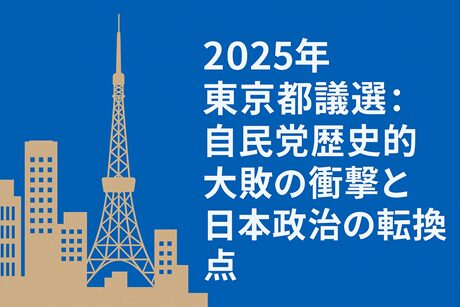

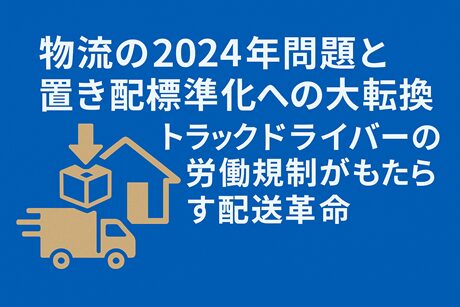

Leave a Reply